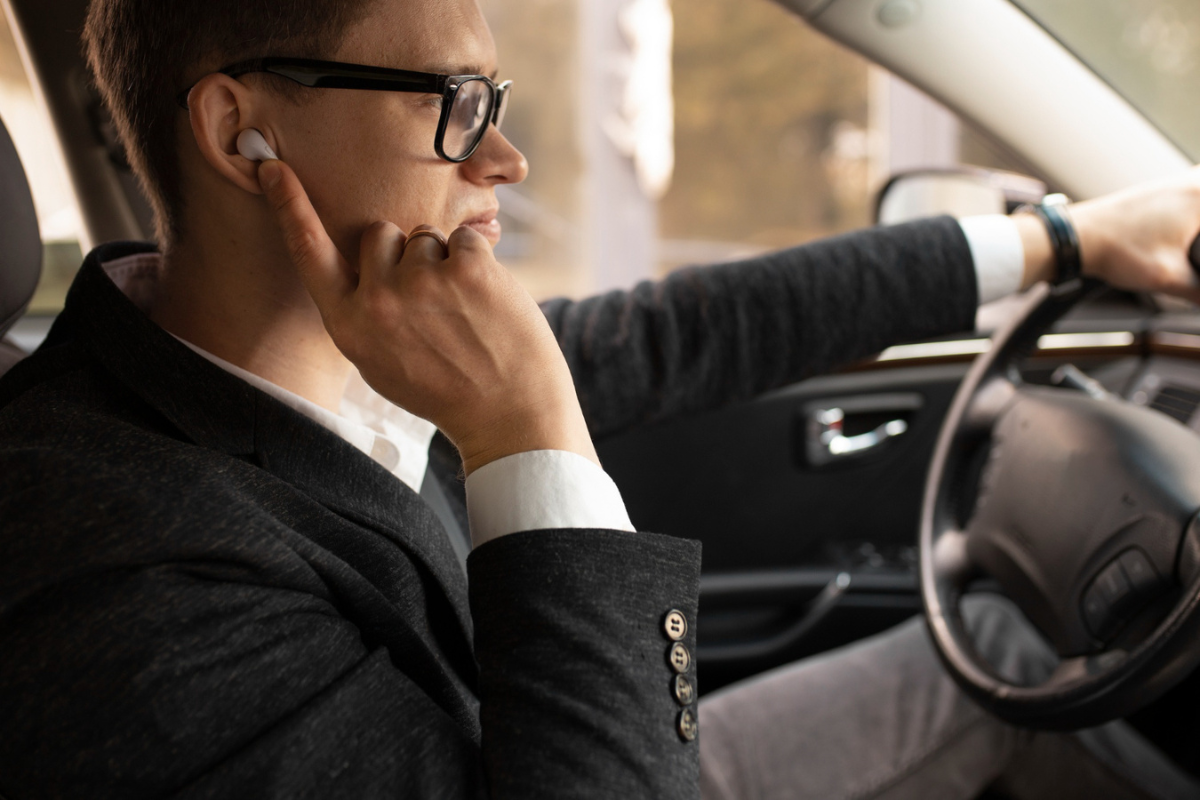A lot of people use headphones while driving to listen to music, take calls, or receive navigation instructions. However, are these activities legal? In this article, you can find all the tips to keep you safe and avoid running into legal problems.
Calling Law Enforcement For Driving With Headphones
Headphones seem harmless when driving, especially when trying to listen to a podcast or engage a GPS. However, their use during driving can be legal or illegal depending on the location where you live.
Why laws differ from one state or country to another?
There is no international law governing the use of headphones while driving. In the United States, each state has its traffic laws. Hence, what s allowed in one state may not be the same in another. Likewise, foreign countries have their own road safety laws where they greatly restrict the use of any form of distracted driving including using headphones.
Consider California and Maryland as examples. These two states have laws that prohibit wearing headphones in both ears while driving. Other states, however, may leave it up to interpretation by law enforcement.
Key terms: distracted driving, situational awareness, and impairment
To know the laws, it helps to understand what is meant by “distracted driving.” It includes any phone calls, food consumption, or even loud music which can pull your attention away from the driving.
Situational awareness is also important. While driving, you have to pay attention to the vehicle’s surroundings, for example, to any sirens or honks. Headphones may block that awareness. Impairment does not just mean alcohol and drugs, but also anything that slows down your reactions to the situation.
States Where It’s Specifically Illegal to Wear Headphones While Driving
Some states have gone further to define what is prohibited. It is important to understand the rules of these states if you live in them or happen to drive through these regions.
States with full bans vs partial restrictions
Several U.S. states like California, Virginia, and Maryland have laws that prohibit the use of headphones or earbuds in both ears while driving. These laws seek to ensure that earbuds and headphones do not block hearing the traffic and emergency vehicles.
New York isn’t the only place that drives under the influence of distractions. Headphones are not mentioned as a banned item, but the use of earbuds is permitted in some places, provided that only one is worn, or external sounds can be heard through the device.
Permitted exceptions (e.g. hearing aids, communication devices)
Many states do allow certain exceptions. Hearing aids and communication devices such as those used in motorcycle helmets are normally permissible. Some jurisdictions allow the use of one earbud, particularly when used for navigation or hands-free calls. Both ears being used to listen is viewed as a hazard to safety for the general populace.
It is advisable to consult your state or local DOT website for the latest updates regarding legal issues that may be of concern to you before venturing out.
Legislation Gaps Drivers Need to be Aware of
Even in the absence of restrictions, headphones pose a problem that could get you in trouble with the law without proper use of care. Legal concerns may arise if someone is injured due to carelessness of the law or because of unusual driving behavior.
Bluetooth and bone conduction audio equipment
Bluetooth devices and bone conduction headphones fall under new technologies. Devices that allow users to hear background noise and audio at the same time while listening are on the rise. These might be safer, but tend to be left unregulated under law.
Bluetooth headsets, particularly the one-ear type, are common among professional drivers and are legal in most states. However, it’s worth noting that hands-free devices can still be distracting.
What are some ways enforcement might vary?
Law enforcement officers often use their discretion when headphone use is involved in a suspected case of distracted driving. If you get in a crash or get stopped for reckless driving while wearing headphones, that fact could be used against you—even if no specific law exists.
So, while there may be laws for you in this case, it’s a matter of minimizing risks while driving.
Safety Risks of Driving With Headphones On
Even if it is legal to wear headphones while driving in your area, it is not recommended.
In what ways do headphones change your awareness and reaction time?
Wearing headphones can cause you to miss out on important audio cues, such as sirens or emergency horns. The reduction of sound makes your reaction time slower, which can turn a small problem into a serious crash.
The situation is worse when using noise-canceling headphones, as they create a complete lack of background sound. You have no way of knowing what is happening outside your car.
Real-life examples of accidents caused by the use of headphones
Some drivers have admitted to wearing headphones while driving, and as a result, they’ve gotten into accidents. They often do not notice when emergency vehicles are nearby and trying to get by or when other cars are trying to get their attention. Insurance companies and police usually use the term ‘headphone distraction’ to explain these sorts of accidents.
These examples emphasize the need to be fully aware while driving, even if you are following the rules of the road.
Headphones Substitutes That Are Safer While Driving
Now you don’t need to make the choice between safety and entertainment as there are solutions of both to fit your needs. Both modern cars and older models that have been upgraded can provide more experiences while driving safely.
Hands free calling and music from car audio systems
With today’s cars, their infotainment systems connect directly to mobile devices. This allows hands free receiving and making calls, listening to music, or receiving GPS instructions. For vehicles that lack integrated technology, there are other options like Bluetooth FM transmitters or dashboard mounts that can offer similar benefits.
Siri, Google Assistant and Alexa these days also offer the chance to be connected to users without having to press any buttons on phones and without needing headphones.
Staying Alert On The Road During Long Drives
Check out safer approaches if you’re using headphones while driving to stay awake or because you’re bored. Make sure to pull over and rest if you feel drowsy. Make sure there is good air ventilation. Take breaks every few hours. Instead of plugging in, use the car stereo to play music or podcasts at a reasonable volume.
After incorporating these strategies, staying alert while reducing chances of distracted driving is possible.
Headphones While Driving – Legal Considerations
Is it illegal to wear headphones while driving? This question is determined based on your region. Regardless of if it’s legal or not, headphones while driving are not smart decision to make.
Wearing headphones while driving can make it very difficult to respond in time and increase chances of getting into trouble legally or in an accident. Instead of risking your life, explore safer alternatives like your car’s audio system or legal hands-free devices.
It is suggested to stay focused and aware while driving to ensure the safety of not only yourself but others on the road as well.
FAQs
Is driving while wearing headphones illegal in all 50 states?
No, not all states have specific laws banning headphone use. Though, several states do ban the use of both ears being covered with headphones. Be sure to look up your state’s laws.
Can I drive with only one earbud in?
Most places allow the use of a single earbud, especially if it is not going to interfere with your hearing or your surroundings.
What if the headphones are used only to provide GPS directions?
Even for directions, using both earbuds could be seen as distracted driving in some places. It’s safer to use your car’s Bluetooth speaker or hands-free system.
Do noise-canceling headphones make driving more dangerous?
Of course. Wearing them would mean you are unable to hear important external sounds such as sirens and warnings which could endanger you while driving. Therefore, they are not safe for driving.
My name is Mustafa, and I have been blogging for over 5 years. I am passionate about sharing complete, accurate, and helpful information with my readers. Along with managing content on The Matcha Read, I also contribute blog posts to premium websites. My goal is to provide valuable insights in a clear and easy-to-understand way, so every reader walks away with useful knowledge.










